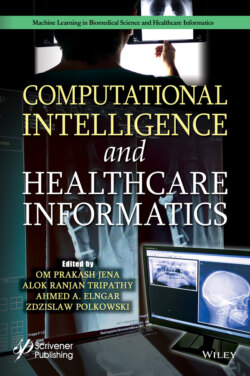Читать книгу Computational Intelligence and Healthcare Informatics - Группа авторов - Страница 48
2.6 Conclusion and Future Scope
ОглавлениеWe found that it is tedious to obtain a good AUC score for all the diseases using single CNN. Doctors used to rely on a broad range of additional data such as patient age, gender, medical history, clinical symptoms, and possibly CXRs from different views. These additional information should also be incorporated into the model training. For the identification of diseases which have small and complex structures on CXRs, a finer resolution such as 512 × 512 or 1,024 × 1,024 may be advantageous. However, for preparation and inference, this investigation needs far more computational resources. In addition, another concern is CXR image consistency. When taking a deeper look at the CheXpert, it is observed that a considerable rate of samples have low quality (e.g., rotated image, low-resolution, samples with texts, and noise) that definitely deteriorate the model performance. Spatially spread abnormalities such as cardiomegaly and Edema can be localized more accurately. Due to shift variant nature of CNN, antialiasing filters are needed to improve the performance of CNN model.
Deep learning models should be able to integrate and interpret data from various imaging sources to obtain a better perspective on the anatomy of the patient in order to allow efficient analysis of patient scans. This could produce deeper insights into the nature and development of the disease, thereby offering a greater degree of understanding of the condition of patients by radiologists. Along with x-ray images other parameters such as heredity, age, and diabetes status, parameters can also be added to improve accuracy. Rather than going for ensemble and pre-trained models, pathology specific and data specific models can be implemented in future by combining good characteristics of existing models. Same models can also be used for detecting abnormalities in other region of body such as brain tumor, mouth cancer, and head-neck cancer. Novel deep learning models can be implemented for detecting post COVID impact on chest.
